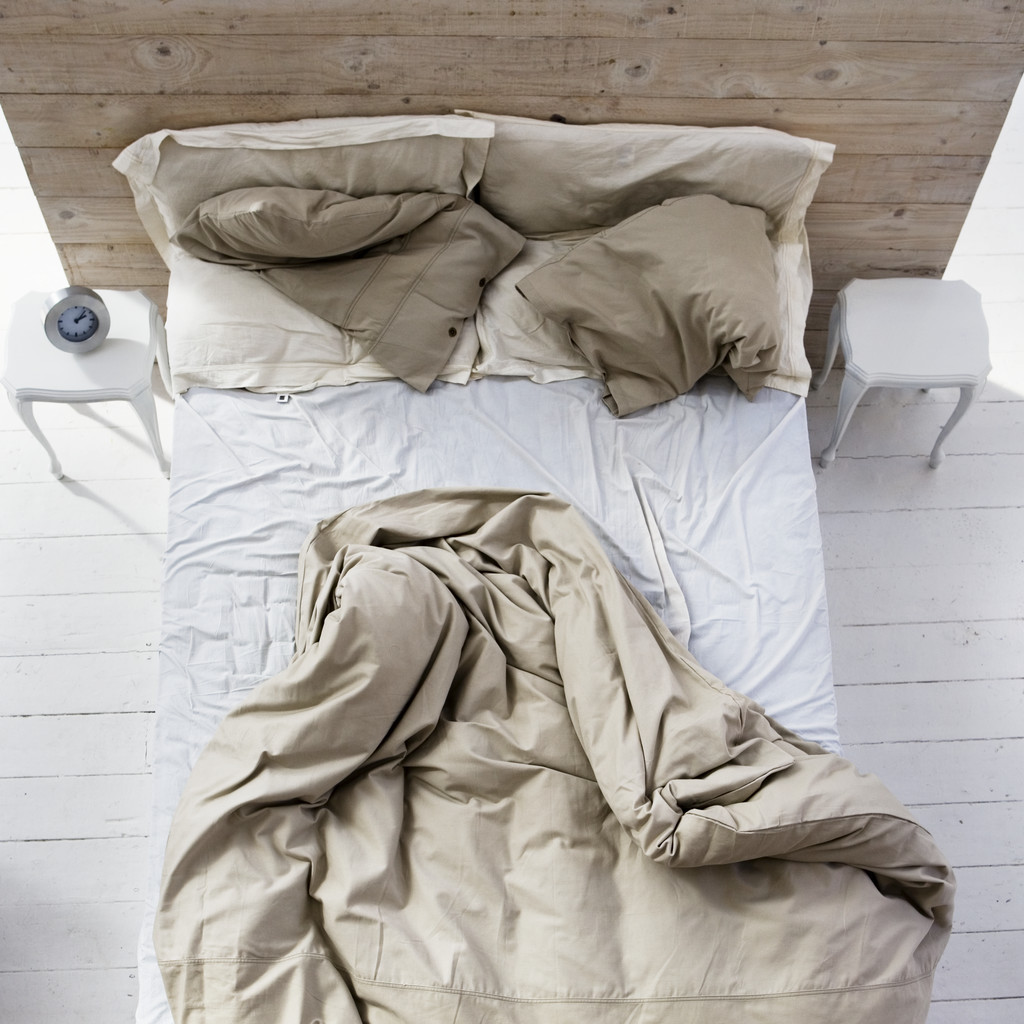Tips for Beating Insomnia without Prescription Pills

Insomnia is the most common sleep disorder in the United States. A recent survey found that 95 percent of adults nationwide experience insomnia at some point in their lives ― and roughly one-third reported insomnia-related sleep problems within the past year. Many people treat insomnia using prescribed medications. Many physicians recommend a class of non-benzodiazepines known as ‘z-drugs’, which have proven quite effective at reducing insomnia symptoms and are considered the go-to medication for this disorder. Other hypnotics and sedatives may be prescribed, as well.
Unfortunately, all prescribed medications used to treat insomnia carry potentially negative side effects. Although these vary by drug, some of the most common effects include daytime drowsiness, headaches, nausea and light sensitivity. Many are also habit-forming and can lead to addictive tendencies if they are taken for long periods of time.
This post will look at some of the most effective anti-insomnia measures that will hopefully help sufferers fall asleep peacefully. For people who want to look at a range of remedies, they can always check out products such as a sleep tincture, to expand on what they use. So, without any further delay, here are some tips that can be put to use.
Types of Insomnia
In order to properly treat insomnia, it’s important to understand the different forms this sleep disorder can take. Secondary insomnia refers to symptoms that occur due to another injury, illness, prescription drug dependency or other conditions that can disrupt sleep patterns; primary insomnia, on the other hand, arises independently.
Insomnia may also be classified by duration. The term ‘short-term’ or ‘acute’ insomnia refers to symptoms that last for less than 30 days; after the 30-day benchmark, the condition progresses to chronic insomnia. Additionally, ‘transient’ insomnia applies to travelers who experience insomnia symptoms as they adapt to a different time zone; ‘jet lag’ is considered a type of short-term transient insomnia. Generally speaking, you should only seek treatment for insomnia once it has evolved into a chronic condition.
Some people with insomnia have a particularly tough time falling asleep; this is known as sleep-onset insomnia. Others struggle to remain asleep throughout the night; this is referred to as sleep-maintenance insomnia. This post will address treatment options for both sleep-onset and sleep-maintenance insomnia.
Option 1: Cognitive Behavioral Therapy
This option (known as CBT for short) is a catch-all term for any type of sleep therapy that addresses insomnia symptoms. CBT has proven highly effective, and is regarded as comparable ― if not superior ― to prescription drugs. CBT often involves sleep restriction therapy (SRT), which requires the patient to follow a rigid sleep schedule every night and get up at the same time each morning. Realigning your sleep patterns to fit a certain window period is often the key to beating insomnia.
Another type of CBT commonly used for insomnia patients is stimulus control, which trains the patient to ignore stimuli (such as light and background noise) that hinder a good night’s sleep. Paradoxical intention may also be used; this reverse-psychology approach requires patients to lay in bed and remain awake as long as possible, allowing their minds to relax and their bodies to become naturally tired. Many CBT patients are asked to record their nighttime patterns in a sleep diary in order to see if progress is being made.
Option 2: Light Therapy
Many people experience insomnia due to disruptions to their Circadian rhythm, a biological 24-hour clock that operates in sync with natural sunlight. Light therapy (also known as phototherapy) uses bright lamps to trigger the suprachiasmatic nucleus area of the brain’s hypothalamus and help realign a patient’s Circadian cycle. Regular exposure to the lamplight will eventually get the patient back on track.
Generally speaking, light therapy requires exposure to the lamps for at least 30 minutes per day, preferably in the morning. Light therapy lamps utilize bulbs measured at roughly 10,000 lux; in contrast, household lights usually range between 50 and 80 lux. Light therapy is relatively expensive and completely drug-free. However, artificial light is less effective for people who spend long periods of time under natural sunlight (i.e., those who work outside).
Option 3: Improved Sleep Hygiene
If you are struggling with insomnia, then there’s a good chance you can reduce some of your symptoms by changing your daily sleep habits. Cutting out nicotine and alcohol is a good start; you may want to curb your caffeine intake, as well. Also, avoid activities like eating and exercising too close to bedtime. You may want to re-evaluate your mattress, as well, particularly if you have chronic back and/or shoulder pain; mattresses made of soft materials like latex and memory foam are designed to alleviate pain and pressure to a much greater extent than traditional innerspring.
Option 4: Melatonin
Melatonin is a natural hormone produced in the pineal gland that helps regulate Circadian rhythm and healthy sleep patterns. It is regulated by the amino acid tryptophan, also known as the sleep-inducing substance in foods like turkey. Many physicians encourage insomnia patients to take melatonin supplements because, unlike other anti-insomnia medications, melatonin is non-habit-forming and produces very few side effects. Melatonin is currently available as an over-the-counter medication.
Tia, and TipsfromTia.com is trying to keep you looking good and
feeling good, from the inside out. If you’ve got a problem or a tip email me! Be sure to Like and share on Facebook or Follow on Twitter, TikTok, or Instagram.
Ben Murray is a writer and researcher for sleep science hub Tuck.com. He can usually be found running, hiking, biking or kayaking around the Pacific Northwest ― though he enjoys a good nap as much as the next person.
